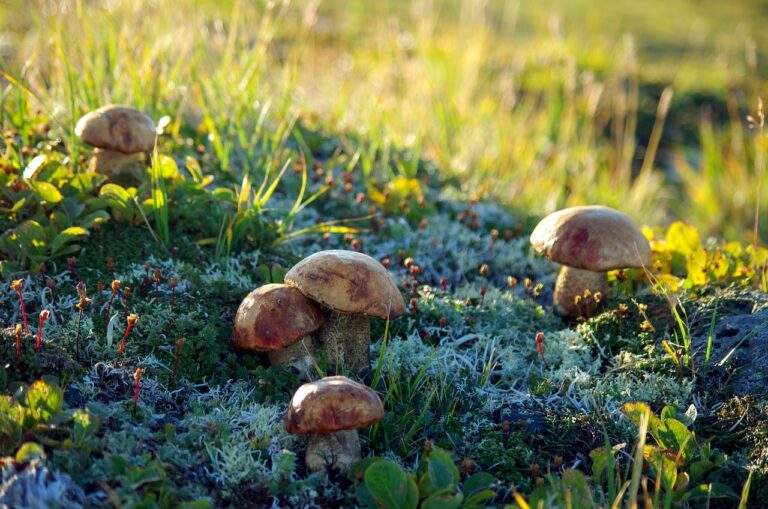Xeriscaping and Sustainable Landscaping: A Guide to Water-Wise Practices, Drought-Tolerant Plants, and Rainwater Harvesting
Looking to create a beautiful, sustainable landscape that conserves water and supports the environment? This guide to xeriscaping and sustainable landscaping has got you covered. Discover the benefits of water-wise practices and learn how to select drought-tolerant plants. With tips on rainwater harvesting and wildlife-friendly design, you'll be well on your way to a vibrant, eco-friendly outdoor space.
Understanding Xeriscaping
When you understand the principles of xeriscaping, you can create a sustainable and water-efficient landscape for your property. Xeriscaping involves using drought-tolerant plants, efficient irrigation, and thoughtful design to minimize water usage while maintaining an attractive outdoor space. By incorporating principles such as soil improvement, mulching, and proper plant selection, you can significantly reduce your outdoor water consumption. This not only benefits the environment but also saves you money on water bills. Additionally, xeriscaping can enhance the beauty and functionality of your landscape, creating a low-maintenance outdoor area that thrives in arid conditions. Understanding the basics of xeriscaping empowers you to make conscious choices about your landscaping, contributing to water conservation efforts and promoting sustainability in your community.
Benefits of Sustainable Landscaping
To fully appreciate the benefits of sustainable landscaping, consider how your property's water efficiency and conservation efforts can positively impact the environment and your finances. Sustainable landscaping reduces water usage, leading to lower water bills and less strain on local water resources. By choosing drought-tolerant plants and implementing water-wise practices, you can create a visually appealing landscape that requires less maintenance and resources. Additionally, sustainable landscaping helps prevent soil erosion, reduces the need for harmful chemical fertilizers and pesticides, and promotes biodiversity by providing habitats for local wildlife. Embracing sustainable landscaping practices not only benefits you economically but also contributes to the overall health of the environment. It's a win-win situation that allows you to enjoy a beautiful outdoor space while making a positive impact on the world around you.
Selecting Drought-Tolerant Plants
Consider selecting drought-tolerant plants for your landscape to minimize water usage and maintain a sustainable, resilient garden. Look for plants that can thrive in your specific climate and soil conditions. Succulents like agave and yucca are excellent choices for arid regions, while lavender and Russian sage are great options for areas with low rainfall. Native plants often have natural resistance to local drought conditions, making them ideal for water-wise landscaping. When choosing plants, pay attention to their water needs, root systems, and growth habits. Grouping plants with similar water requirements together can help optimize irrigation and conserve water. By incorporating drought-tolerant plants into your landscape, you can create a beautiful and environmentally friendly garden that thrives with minimal water input.
Principles of Water-Wise Practices
To practice water-wise landscaping, prioritize the efficient use of water resources in your garden by implementing sustainable irrigation methods and selecting drought-tolerant plants. First, consider installing drip irrigation systems, which deliver water directly to the base of plants, minimizing evaporation and ensuring that water is used more efficiently. Grouping plants with similar water needs together can also help prevent overwatering and underwatering. Mulching around plants can reduce water evaporation from the soil and suppress weed growth, helping to conserve moisture. Additionally, capturing rainwater in barrels or cisterns can provide a sustainable water source for your garden. By following these principles, you can create a beautiful and sustainable landscape that conserves water while supporting a thriving ecosystem.
Implementing Rainwater Harvesting
When implementing rainwater harvesting in your landscaping, it is important to assess your water needs and the best methods for capturing and utilizing rainwater effectively. Start by evaluating the area available for rainwater collection, such as the roof of your home or any other structures. Consider installing gutters and downspouts to direct the flow of rainwater into a storage system, such as a rain barrel or cistern. Ensure that the storage system is equipped with a fine mesh screen to prevent debris from entering and contaminating the water. Additionally, you can integrate a filtration system to further purify the rainwater for various uses in your landscape. By implementing these strategies, you can maximize the benefits of rainwater harvesting while conserving water and promoting sustainability in your landscaping efforts.
Designing a Low-Water-Use Landscape
Assessing your landscape's water needs and available area for rainwater collection, you can design a low-water-use landscape by selecting drought-tolerant plants and implementing efficient irrigation methods. Start by choosing native or adapted plants that require minimal watering once established. Group plants with similar water needs together to make irrigation more efficient. Consider using mulch to retain moisture and reduce evaporation. Implementing drip irrigation or soaker hoses can deliver water directly to the plant's roots, minimizing waste. Rainwater harvesting systems can also be integrated to collect and store rainwater for future use. Additionally, incorporating permeable hardscapes can help reduce water runoff and promote groundwater recharge. By incorporating these strategies, you can create a beautiful and sustainable landscape that conserves water and supports the environment.
Soil Preparation for Xeriscaping
Once you have selected drought-tolerant plants and planned the layout for efficient irrigation, the next step in creating a water-wise landscape is preparing the soil for xeriscaping. Begin by assessing the soil type and structure in your landscape. Sandy soils drain water quickly, while clay soils retain water. Incorporating organic matter such as compost improves soil structure, enhances water retention, and provides vital nutrients for plant growth. Before planting, loosen the soil to a depth of 12 inches to encourage deep root growth and improve water infiltration. Consider using mulch to reduce water evaporation, suppress weed growth, and moderate soil temperature. By preparing the soil thoughtfully, you set the foundation for a thriving, water-efficient landscape that benefits both the environment and your community.
Irrigation Techniques for Drought-Tolerant Landscapes
To ensure efficient water usage in your xeriscaped landscape, employ irrigation techniques that supplement the soil preparation and plant selection, ensuring optimal growth and sustainability. Drip irrigation is a highly effective method for delivering water directly to the root zones of plants, minimizing evaporation and runoff. Consider installing a rainwater harvesting system to capture and store rainwater for later use in your landscape. This sustainable practice reduces reliance on traditional water sources and helps to maintain moisture levels during drier periods. Additionally, using soaker hoses can provide slow, consistent watering to the base of plants, promoting deep root growth and drought tolerance. By incorporating these irrigation techniques into your drought-tolerant landscape, you can conserve water while supporting the health and vitality of your plants.
Maintenance Tips for Water-Efficient Landscaping
Consider incorporating regular soil amendments into your water-efficient landscape maintenance routine to enhance soil quality and promote the long-term health of your drought-tolerant plants. Organic matter, such as compost or well-rotted manure, can improve soil structure, water retention, and nutrient levels. Aim to mulch your plant beds to reduce water evaporation, minimize weed growth, and regulate soil temperature. Prune your plants regularly to encourage healthy growth and water efficiency. Check for any signs of pests or diseases, and address them promptly to prevent damage to your water-wise landscape. Additionally, adjust your irrigation schedule based on seasonal weather changes to avoid overwatering. By following these maintenance tips, you can ensure a thriving, water-efficient landscape that contributes to a sustainable environment.
Creating a Wildlife-Friendly Xeriscape
To attract wildlife to your xeriscape, incorporate native plants and provide shelter and water sources. Native plants are well-suited to the local climate and provide food and habitat for birds, butterflies, and other creatures. Consider planting a variety of flowers, shrubs, and trees to attract different species. Additionally, incorporating birdhouses, bat boxes, and insect hotels can provide essential shelter for wildlife. Creating a water source such as a birdbath, small pond, or water feature will also help attract animals to your xeriscape. Be mindful of the water levels in these features, especially during dry periods, and consider using rainwater harvesting techniques to keep them filled. By incorporating native plants, shelter, and water sources, you can create a vibrant and wildlife-friendly xeriscape that benefits both the environment and your local ecosystem.
Conclusion
Now that you have the knowledge and tools to create a beautiful, water-wise xeriscape, it's time to get started! By implementing sustainable landscaping practices, selecting drought-tolerant plants, and harvesting rainwater, you can not only conserve water, but also create a vibrant and eco-friendly outdoor space. With the right techniques and maintenance, your xeriscape will thrive and support local wildlife, all while reducing your environmental impact. Get ready to enjoy your stunning, sustainable landscape!






